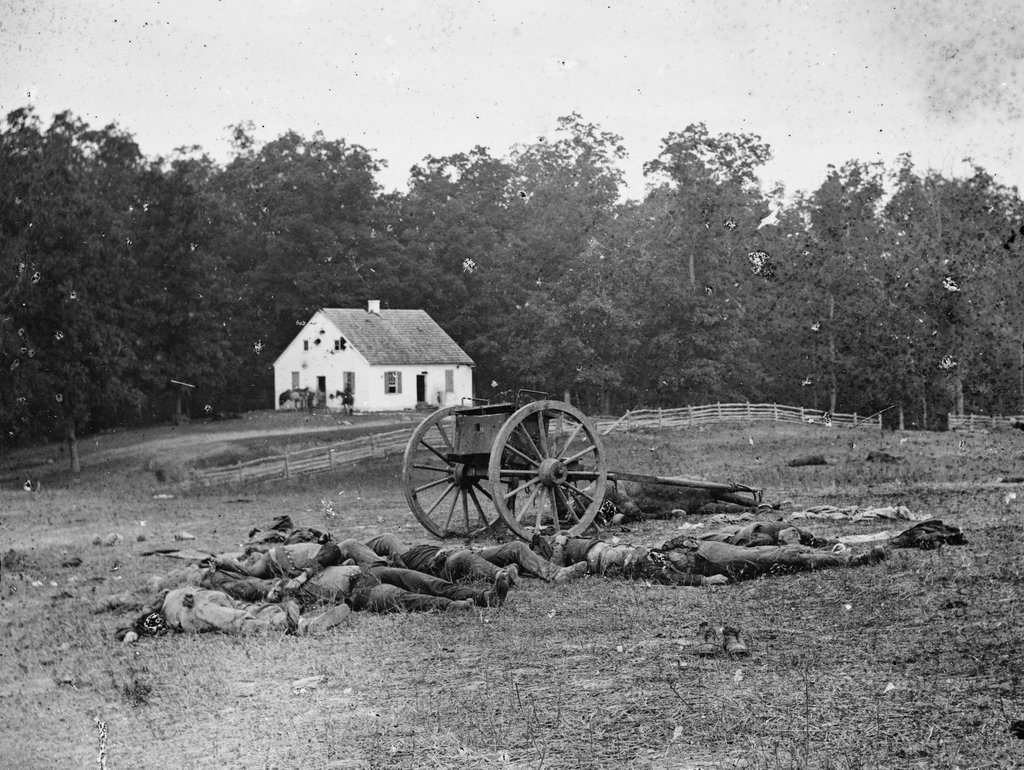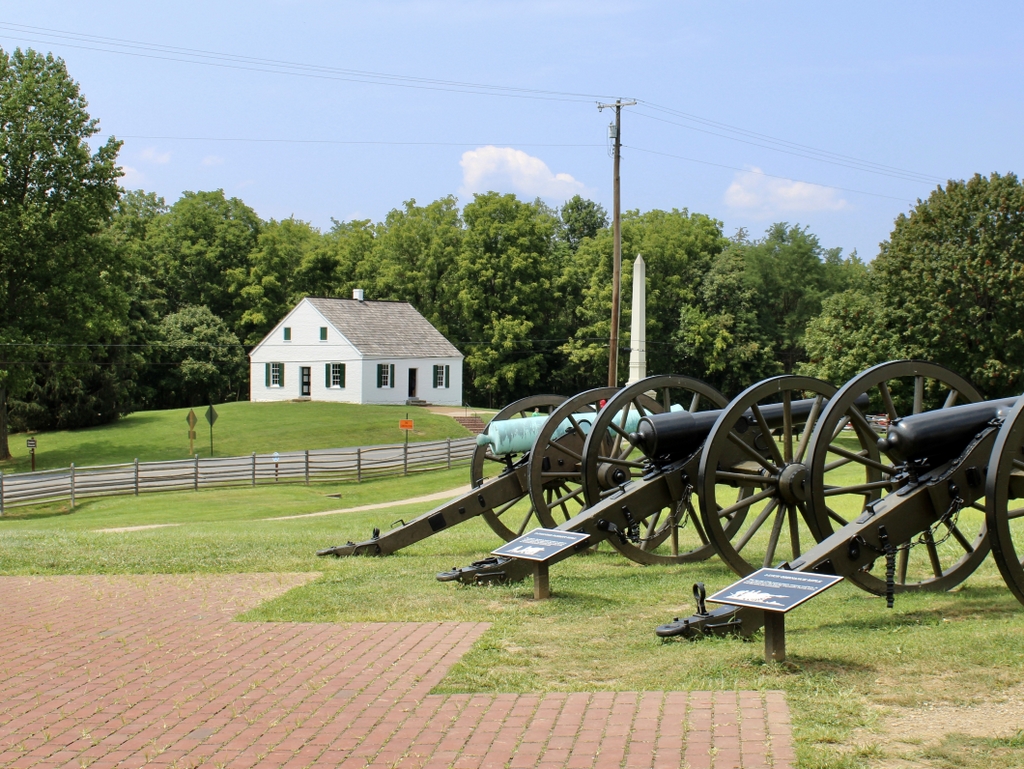Bodies of Confederate soldiers in front of the Dunker Church in the aftermath of the Battle of Antietam, photographed in September 1862 by Alexander Gardner. Image courtesy of the Library of Congress, Civil War Glass Negatives and Related Prints collection.
The scene in 2021:
The first photo is one of the most iconic images from the Civil War, showing the aftermath of the Battle of Antietam. It was taken by renowned war photographer Alexander Gardner, who captured a small glimpse of the deadliest single-day battle in American history. In the foreground are dead Confederate soldiers lined up in front of an artillery limber, with a dead horse beneath the cart. An assortment of debris is scattered around the field, including a pair of shoes in the lower right side of the scene. Further in the distance is the Dunker Church, with whitewashed walls that bear the scars that the battle had inflicted two days earlier.
The Battle of Antietam was fought on September 17, 1862, between Union forces led by General George B. McClellan and Confederates led by General Robert E. Lee. It was part of Lee’s first major offensive campaign into northern territory, which was undertaken with the hopes of undermining northern morale and support for the war. After a series of smaller battles in the area, Lee took a defensive position here at Sharpsburg, Maryland. The left flank of his army was located here in this scene, in the area around the Dunker Church, and it was here that Union forces launched their attack early in the morning of the battle.
The Dunker Church had been built in 1852 as the meeting house of the German Baptist Brethren. One of the core teachings of this Christian denomination was pacifism, but ironically their church would become the scene of some of the fiercest fighting of the battle. Because of its visibility on the battlefield, Union forces used the church as a landmark to focus their attacks. Throughout the morning, the ground near the church frequently changed hands, with both sides sustaining heavy casualties without making significant progress. Over the course of the battle, the fighting eventually shifted further to the south, but not before leaving the area around the church “literally carpeted with dead and dying men,” as Confederate General Thomas “Stonewall” Jackson would later describe it.
By the end of the day, over 2,000 Union soldiers were dead and nearly 10,000 wounded, along with 1,500 Confederates dead and over 7,7000 wounded, making it the bloodiest day in the history of the American military. From a tactical perspective it was essentially a draw, but it was a strategic victory for the Union, since it forced Lee to abandon his invasion plans and return south to Virginia. However, the victorious McClellan faced heavy criticism. Despite having significantly more soldiers than Lee, McClellan failed to exploit this advantage during the battle, nor did he pursue Lee’s vulnerable army during their retreat to Virginia. This was characteristic of McClellan’s overly cautious methods, and it ultimately led to his dismissal by Abraham Lincoln on November 5.
In the meantime, the aftermath of the battle was extensively documented by photographers such as Alexander Gardner. The Civil War was the first major American conflict to be photographed, enabling the general public to see, for the first time, the harsh realities of war. Gardner arrived at Antietam two days later on September 19, and he spent the next few days photographing the battlefield, including scenes of dead soldiers scattered along roads and in fields. He took several different photographs of this scene in front of the Dunker Church, and it became one of his most memorable photographs of the war, perhaps because of the stark contrast between the white church in the background and the carnage in the foreground.
Following the battle, the church was repaired, as shown in the photograph in the previous post, which was taken by Alexander Gardner’s younger brother James at the end of the war. It remained in use as a church until 1899, but it subsequently fell into disrepair, in part because of souvenir hunters who damaged the vacant building by removing bricks from the walls. It ultimately collapsed in a windstorm in 1921, and the site eventually became a gas station, lunch counter, and souvenir shop.
In 1951, the Washington County Historical Society purchased the property, and then gave it to the National Park Service. It became part of the Antietam National Battlefield, and a replica church was reconstructed here on the original foundation in 1962, as part of the centennial of the battle. It still stands today, as shown in the 2021 photo, and it remains one of the most distinctive landmarks on the battlefield. Where the dead Confederate soldiers once rested is now a row of cannons, representing the Confederate artillery position here at this location. In the distant center, in front of the church, is a monument to the 5th, 7th, and 66th Ohio Infantry Regiments, which was dedicated here in 1903. Overall, the Antietam battlefield is one of the best-preserved of all the Civil War battlefields, and this scene is easily recognizable from the first photo, some 160 years later.


